In the growing segment of electric SUVs, two competitors stand out: the Volvo EX40 and the Tesla Model Y. This article compares these two vehicles across various technical aspects and innovations to help potential buyers make an informed decision.
Volvo EX40 vs Tesla Model Y – Differences & prices compared
Two cars, one duel: Volvo EX40 meets Tesla Model Y.
Which one wins in performance, efficiency and value for money? Find out now!
Performance and Powertrain
The Volvo EX40 offers a choice between rear-wheel drive and all-wheel drive configurations, with power outputs ranging from 238 HP in the base model to a robust 408 HP in the performance variant. Its acceleration times are impressive, with the quickest model achieving 0-100 km/h in just 4.8 seconds. The EX40 features a battery capacity of either 67 kWh or 79 kWh, providing an electric range of up to 576 km, thanks to an efficient consumption rate of 16.6 kWh/100 km.
On the other hand, the Tesla Model Y is known for its dynamic performance profile. It offers a wider range of power outputs, from 299 HP to an astounding 534 HP. The Model Y's acceleration is also remarkable, with the quickest variant reaching 0-100 km/h in merely 3.7 seconds. Its battery options mirror those of the Volvo, with capacities ranging from 62 kWh to 79 kWh and an electric range that can extend up to 600 km with a consumption rate as low as 14.9 kWh/100 km.
Dimensions and Practicality
The Volvo EX40 measures 4440 mm in length, 1863 mm in width, and 1647 mm in height, offering a compact SUV experience. It has a trunk capacity of 410 liters and can comfortably seat 5 passengers. The curb weight ranges from 2040 kg to 2170 kg depending on the chosen variant.
In comparison, the Tesla Model Y is larger, measuring 4751 mm in length, 1921 mm in width, and 1624 mm in height. This additional size translates to a significantly greater trunk capacity of 854 liters, making it a more practical choice for families or those needing extra cargo space. It also seats 5 to 7 passengers, further enhancing its versatility. The Model Y's curb weight ranges from 1909 kg to 1995 kg, depending on the configuration.
Innovative Technologies and Features
Volvo is renowned for its safety features, and the EX40 is no exception. It comes equipped with advanced driver-assistance systems that promise to ensure the highest safety ratings in its class. The interior boasts a minimalist Scandinavian design, with an emphasis on sustainability and user-friendly technology, including an intuitive infotainment system.
The Tesla Model Y boasts cutting-edge technology, including Tesla's renowned Autopilot system, which offers semi-autonomous driving capabilities. The user experience is heavily dependent on its large touchscreen interface, which controls nearly all vehicle functions. Tesla's over-the-air updates allow for continual improvements and feature additions, keeping the vehicle at the forefront of technology long after purchase.
Cost and Value
Pricing is always a crucial factor in any vehicle comparison. While exact figures can vary based on trim and options, the Volvo EX40 is anticipated to be competitively priced in the electric SUV market. Tesla’s Model Y has established itself with a strong resale value and customer loyalty, which can be a deciding factor for many buyers.
Conclusion
Ultimately, both the Volvo EX40 and the Tesla Model Y offer compelling features in the electric SUV market. The EX40 shines with its safety credentials and user-friendly interior, while the Model Y impresses with performance and cutting-edge technology. Potential buyers should consider their priorities—whether it be practicality, technology, performance, or safety—before making their choice.
Here’s where it gets real: The technical differences in detail
Costs and Efficiency:
When it comes to price and running costs, the biggest differences usually appear. This is often where you see which car fits your budget better in the long run.
Tesla Model Y has a evident advantage in terms of price – it starts at 34300 £, while the Volvo EX40 costs 42800 £. That’s a price difference of around 8571 £.
In terms of energy consumption, the advantage goes to the Tesla Model Y: with 13.10 kWh per 100 km, it’s distinct more efficient than the Volvo EX40 with 16.60 kWh. That’s a difference of about 3.50 kWh.
As for range, the Tesla Model Y performs minimal better – achieving up to 622 km, about 46 km more than the Volvo EX40.
Engine and Performance:
Power, torque and acceleration are the classic benchmarks for car enthusiasts – and here, some clear differences start to show.
When it comes to engine power, the Tesla Model Y has a noticeable edge – offering 627 HP compared to 442 HP. That’s roughly 185 HP more horsepower.
In acceleration from 0 to 100 km/h, the Tesla Model Y is evident quicker – completing the sprint in 3.50 s, while the Volvo EX40 takes 4.60 s. That’s about 1.10 s faster.
In terms of top speed, the Tesla Model Y performs distinct better – reaching 250 km/h, while the Volvo EX40 tops out at 180 km/h. The difference is around 70 km/h.
There’s also a difference in torque: Volvo EX40 pulls distinct stronger with 670 Nm compared to 493 Nm. That’s about 177 Nm difference.
Space and Everyday Use:
Cabin size, boot volume and payload all play a role in everyday practicality. Here, comfort and flexibility make the difference.
Both vehicles offer seating for 5 people.
In curb weight, Tesla Model Y is minimal lighter – 1976 kg compared to 2040 kg. The difference is around 64 kg.
In terms of boot space, the Tesla Model Y offers clearly more room – 822 L compared to 410 L. That’s a difference of about 412 L.
In maximum load capacity, the Tesla Model Y performs distinct better – up to 2138 L, which is about 738 L more than the Volvo EX40.
When it comes to payload, Volvo EX40 slight takes the win – 480 kg compared to 472 kg. That’s a difference of about 8 kg.
Who comes out on top?
Overall, the Tesla Model Y shows itself to be outperforms in nearly all aspects and secures the title of DriveDuel Champion.
It convinces with the more balanced overall package and proves to be the more versatile choice for everyday use.
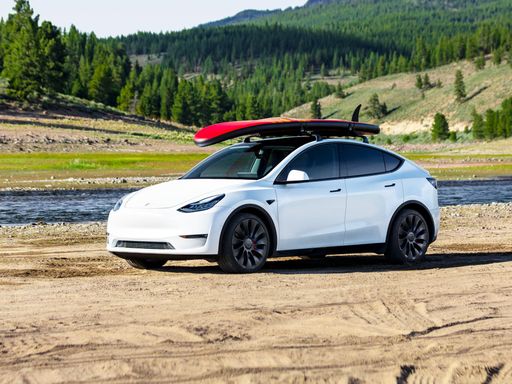 @ Tesla, Inc.
@ Tesla, Inc.
Tesla Model Y
Volvo EX40
The Volvo EX40 wraps Scandinavian calm and clever practicality into a compact electric package that feels both premium and refreshingly uncomplicated. It's the grown-up answer to flashier rivals — a safe, comfy, and city-friendly EV with thoughtful tech that makes everyday driving quietly satisfying.
details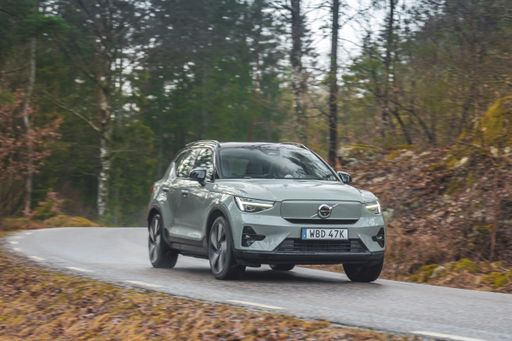 @ Volvo Cars
@ Volvo Cars
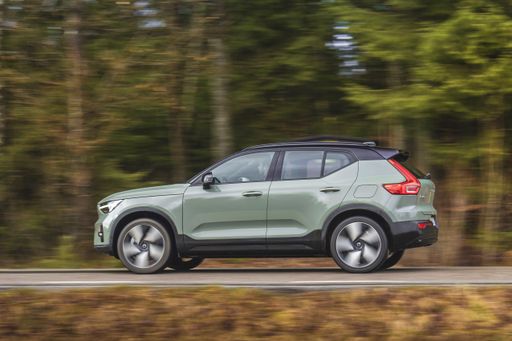 @ Volvo Cars
@ Volvo Cars
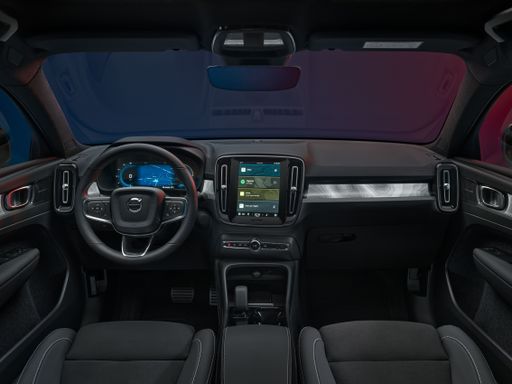 @ Volvo Cars
@ Volvo Cars
Tesla Model Y
The Tesla Model Y blends SUV practicality with sports-car poke, wrapping a roomy, minimalist cabin and handy hatch into a slick, aerodynamic package that feels more Silicon Valley gadget than garage ornament. It’s an ideal pick for buyers who want effortless electric driving, regular software improvements and access to Tesla’s convenient charging network, though style-conscious shoppers should know it’s more about tech and efficiency than classic luxury.
details @ Tesla, Inc.
@ Tesla, Inc.
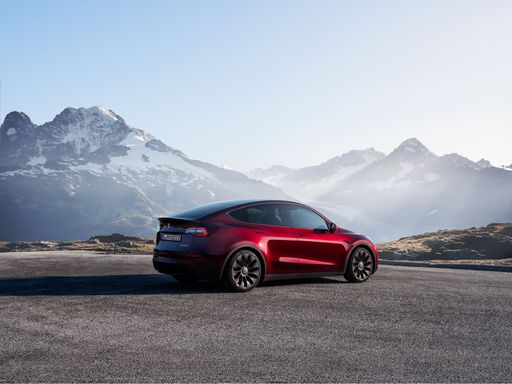 @ Tesla, Inc.
@ Tesla, Inc.
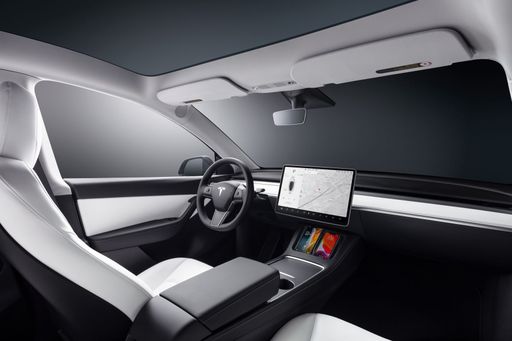 @ Tesla, Inc.
@ Tesla, Inc.
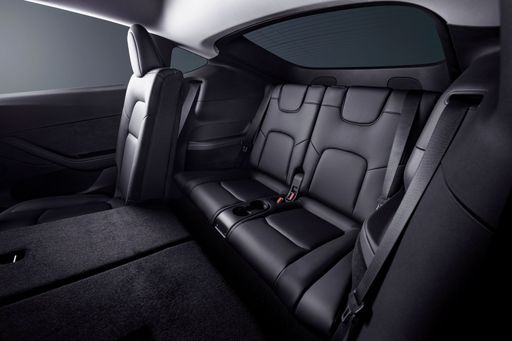 @ Tesla, Inc.
@ Tesla, Inc.
 @ Volvo Cars
@ Volvo Cars
|
 @ Tesla, Inc.
@ Tesla, Inc.
|
|
|
|
Costs and Consumption |
|
|---|---|
|
Price
42800 - 58200 £
|
Price
34300 - 53100 £
|
|
Consumption L/100km
-
|
Consumption L/100km
-
|
|
Consumption kWh/100km
16.6 - 17.6 kWh
|
Consumption kWh/100km
13.1 - 16.2 kWh
|
|
Electric Range
480 - 576 km
|
Electric Range
534 - 622 km
|
|
Battery Capacity
67 - 79 kWh
|
Battery Capacity
64.5 - 85 kWh
|
|
co2
0 g/km
|
co2
0 g/km
|
|
Fuel tank capacity
-
|
Fuel tank capacity
-
|
Dimensions and Body |
|
|---|---|
|
Body Type
SUV
|
Body Type
SUV
|
|
Seats
5
|
Seats
5
|
|
Doors
5
|
Doors
5
|
|
Curb weight
2040 - 2170 kg
|
Curb weight
1976 - 2108 kg
|
|
Trunk capacity
410 L
|
Trunk capacity
822 L
|
|
Length
4440 mm
|
Length
4790 - 4797 mm
|
|
Width
1863 mm
|
Width
1921 mm
|
|
Height
1647 mm
|
Height
1611 - 1624 mm
|
|
Max trunk capacity
1286 - 1400 L
|
Max trunk capacity
2022 - 2138 L
|
|
Payload
430 - 480 kg
|
Payload
440 - 472 kg
|
Engine and Performance |
|
|---|---|
|
Engine Type
Electric
|
Engine Type
Electric
|
|
Transmission
Automatic
|
Transmission
Automatic
|
|
Transmission Detail
Reduction Gearbox
|
Transmission Detail
Reduction Gearbox
|
|
Drive Type
Rear-Wheel Drive, All-Wheel Drive
|
Drive Type
All-Wheel Drive, Rear-Wheel Drive
|
|
Power HP
238 - 442 HP
|
Power HP
299 - 627 HP
|
|
Acceleration 0-100km/h
4.6 - 7.3 s
|
Acceleration 0-100km/h
3.5 - 7.2 s
|
|
Max Speed
180 km/h
|
Max Speed
201 - 250 km/h
|
|
Torque
420 - 670 Nm
|
Torque
420 - 493 Nm
|
|
Number of Cylinders
-
|
Number of Cylinders
-
|
|
Power kW
175 - 325 kW
|
Power kW
220 - 461 kW
|
|
Engine capacity
-
|
Engine capacity
-
|
General |
|
|---|---|
|
Model Year
2024
|
Model Year
2025
|
|
CO2 Efficiency Class
A
|
CO2 Efficiency Class
A
|
|
Brand
Volvo
|
Brand
Tesla
|
Is the Volvo EX40 offered with different drivetrains?
The Volvo EX40 is available as Rear-Wheel Drive or All-Wheel Drive.
The prices and data displayed are estimates based on German list prices and may vary by country. This information is not legally binding.
